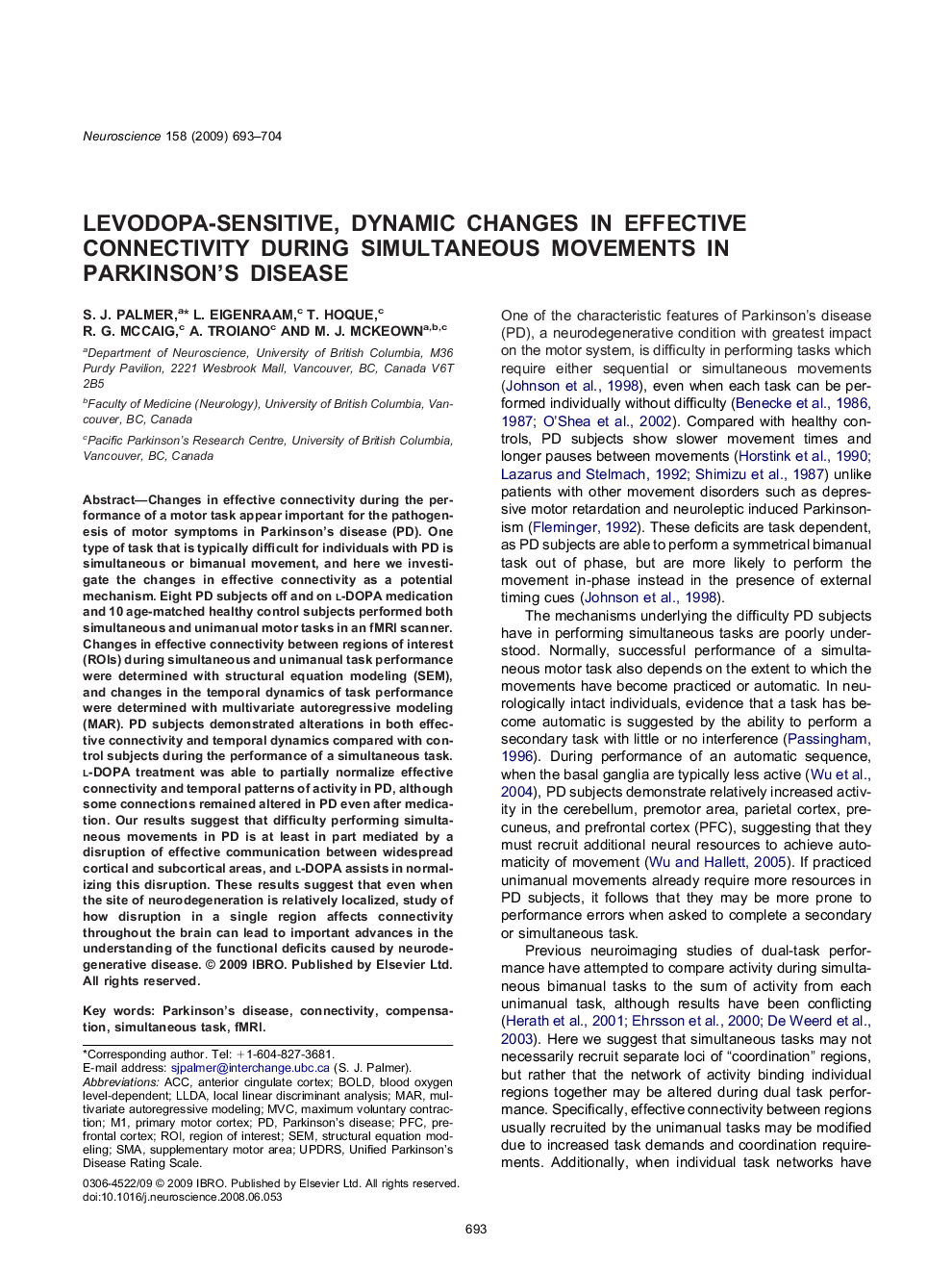| Article ID | Journal | Published Year | Pages | File Type |
|---|---|---|---|---|
| 6277808 | Neuroscience | 2009 | 12 Pages |
Abstract
Changes in effective connectivity during the performance of a motor task appear important for the pathogenesis of motor symptoms in Parkinson's disease (PD). One type of task that is typically difficult for individuals with PD is simultaneous or bimanual movement, and here we investigate the changes in effective connectivity as a potential mechanism. Eight PD subjects off and on l-DOPA medication and 10 age-matched healthy control subjects performed both simultaneous and unimanual motor tasks in an fMRI scanner. Changes in effective connectivity between regions of interest (ROIs) during simultaneous and unimanual task performance were determined with structural equation modeling (SEM), and changes in the temporal dynamics of task performance were determined with multivariate autoregressive modeling (MAR). PD subjects demonstrated alterations in both effective connectivity and temporal dynamics compared with control subjects during the performance of a simultaneous task. l-DOPA treatment was able to partially normalize effective connectivity and temporal patterns of activity in PD, although some connections remained altered in PD even after medication. Our results suggest that difficulty performing simultaneous movements in PD is at least in part mediated by a disruption of effective communication between widespread cortical and subcortical areas, and l-DOPA assists in normalizing this disruption. These results suggest that even when the site of neurodegeneration is relatively localized, study of how disruption in a single region affects connectivity throughout the brain can lead to important advances in the understanding of the functional deficits caused by neurodegenerative disease.
Keywords
multivariate autoregressive modelingUPDRSPFCMVCROIBOLDACCMARConnectivityParkinson's diseasefMRICompensationmaximum voluntary contractionSMAprefrontal cortexprimary motor cortexanterior cingulate cortexSEMStructural equation modelingUnified Parkinson's Disease Rating Scaleregion of interestSMA, supplementary motor areablood oxygen level-dependent
Related Topics
Life Sciences
Neuroscience
Neuroscience (General)
Authors
S.J. Palmer, L. Eigenraam, T. Hoque, R.G. McCaig, A. Troiano, M.J. McKeown,
